Acute dose of melatonin via Nrf2 dependently prevents acute ethanol-induced neurotoxicity in the developing rodent brain
- PMID: 29679979
- PMCID: PMC5911370
- DOI: 10.1186/s12974-018-1157-x
Acute dose of melatonin via Nrf2 dependently prevents acute ethanol-induced neurotoxicity in the developing rodent brain
Abstract
Background: Melatonin is a well-known potent endogenous antioxidant pharmacological agent with significant neuroprotective actions. Here in the current study, we explored the nuclear factor erythroid 2-related factor 2 (Nrf2) gene-dependent antioxidant mechanism underlying the neuroprotective effects of the acute melatonin against acute ethanol-induced elevated reactive oxygen species (ROS)-mediated neuroinflammation and neurodegeneration in the developing rodent brain.
Methods: In vivo rat pups were co-treated with a single dose of acute ethanol (5 g/kg, subcutaneous (S.C.)) and a single dose of acute melatonin (20 mg/kg, intraperitoneal (I.P.)). Four hours after a single S.C. and I.P. injections, all of the rat pups were sacrificed for further biochemical (Western blotting, ROS- assay, LPO-assay, and immunohistochemical) analyses. In order to corroborate the in vivo results, we used the in vitro murine-hippocampal HT22 and microglial BV2 cells, which were subjected to knockdown with small interfering RNA (siRNA) of Nrf2 genes and exposed with melatonin (100 μM) and ethanol (100 mM) and proceed for further biochemical analyses.
Results: Our biochemical, immunohistochemical, and immunofluorescence results demonstrate that acute melatonin significantly upregulated the master endogenous antioxidant Nrf2 and heme oxygenase-1, consequently reversing the acute ethanol-induced elevated ROS and oxidative stress in the developing rodent brain, and in the murine-hippocampal HT22 and microglial BV2 cells. In addition, acute melatonin subsequently reduced the activated MAPK-p-P38-JNK pathways and attenuated neuroinflammation by decreasing the expression of activated gliosis and downregulated the p-NF-K-B/p-IKKβ pathway and decreased the expression levels of other inflammatory markers in the developing rodent brain and BV2 cells. Of note, melatonin acted through the Nrf2-dependent mechanism to attenuate neuronal apoptosis in the postnatal rodent brain and HT22 cells. Immunohistofluorescence results also showed that melatonin prevented ethanol-induced neurodegeneration in the developing rodent brain. The in vitro results indicated that melatonin induced neuroprotection via Nrf2-dependent manner and reduced ethanol-induced neurotoxicity.
Conclusions: The pleiotropic and potent neuroprotective antioxidant characteristics of melatonin, together with our in vivo and in vitro findings, suppose that acute melatonin could be beneficial to prevent and combat the acute ethanol-induced neurotoxic effects, such as elevated ROS, neuroinflammation, and neurodegeneration in the developing rodent brain.
Keywords: Ethanol; MAPK-p-P38-JNK pathway; Melatonin; Neurodegeneration; Neuroinflammation; Neurotoxicity; Nuclear factor erythroid 2-related factor 2 (Nrf2); ROS/oxidative stress; p-NF-K-B/p-IKKβ pathway.
Conflict of interest statement
Ethics approval
All the experiments with animal and other experimental protocols and procedures were approved (Approval ID: 125) by the Ethics Review Committee of the Gyeongsang National University, Republic of Korea.
Competing interests
The authors declare that they have no competing interests.
Publisher’s Note
Springer Nature remains neutral with regard to jurisdictional claims in published maps and institutional affiliations.
Figures
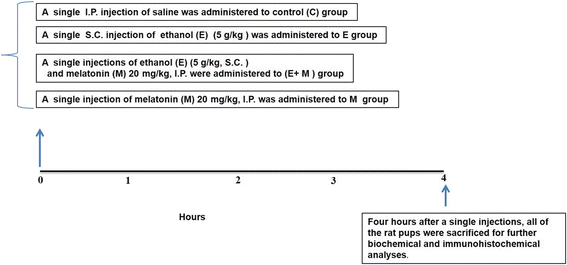
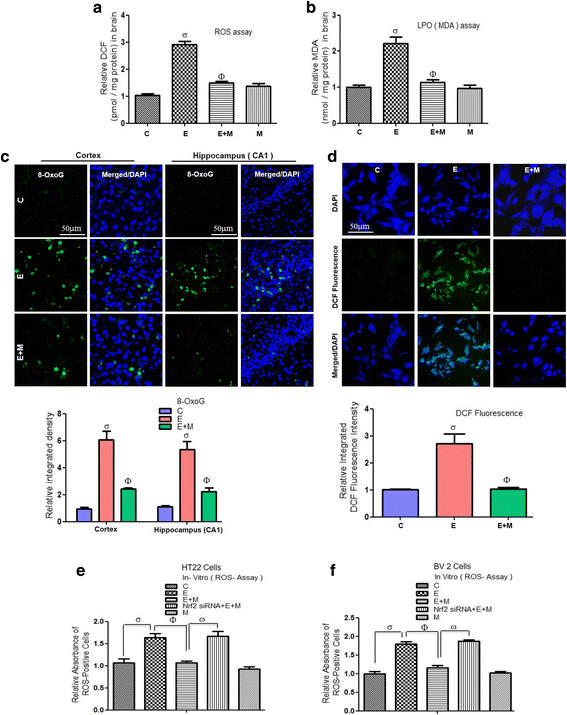
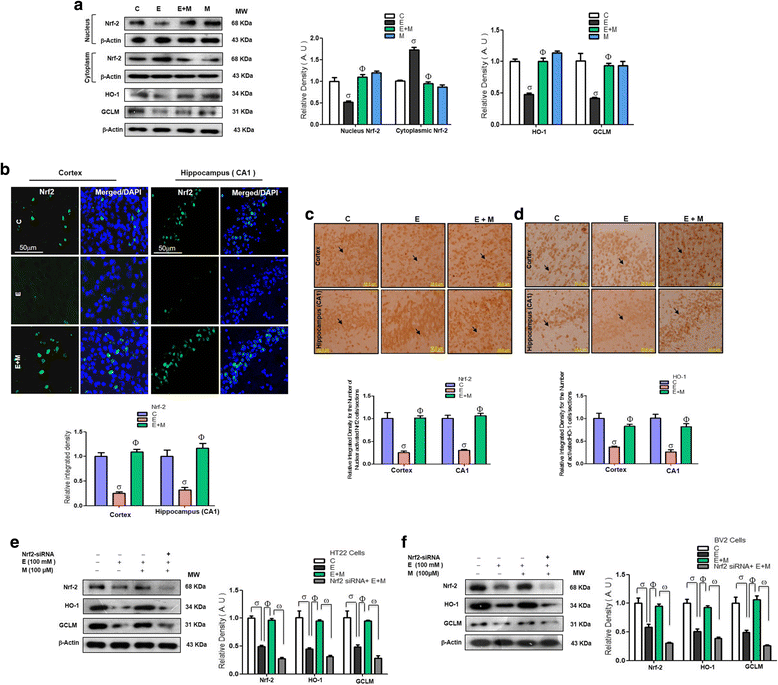
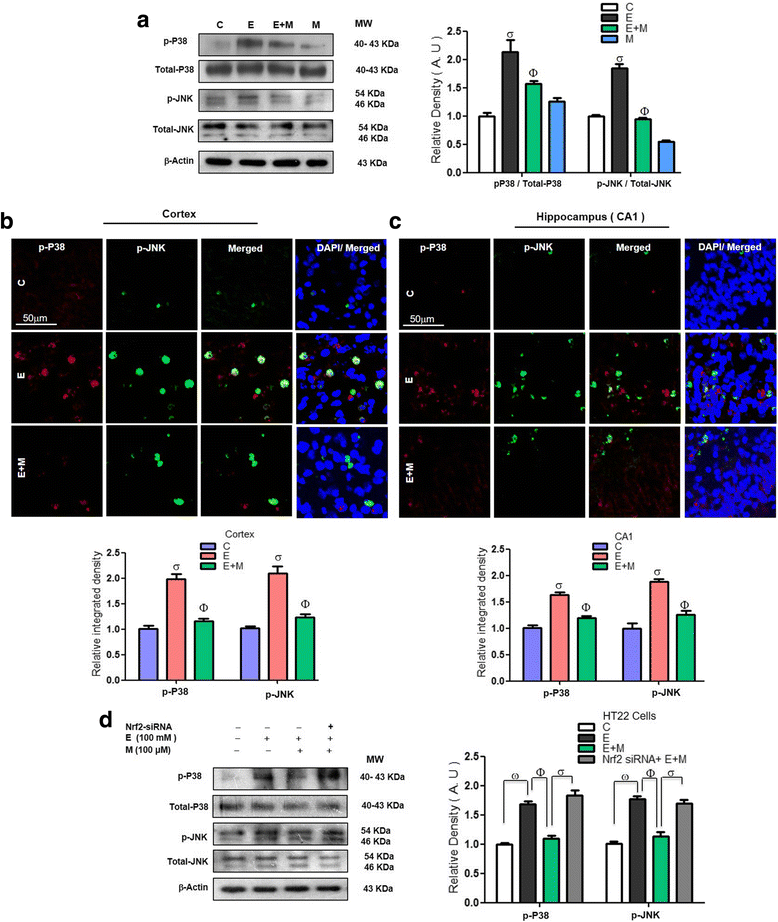
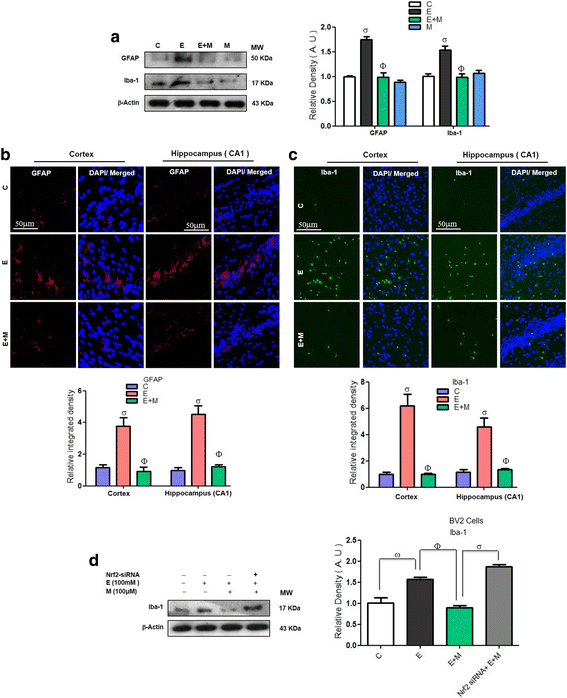
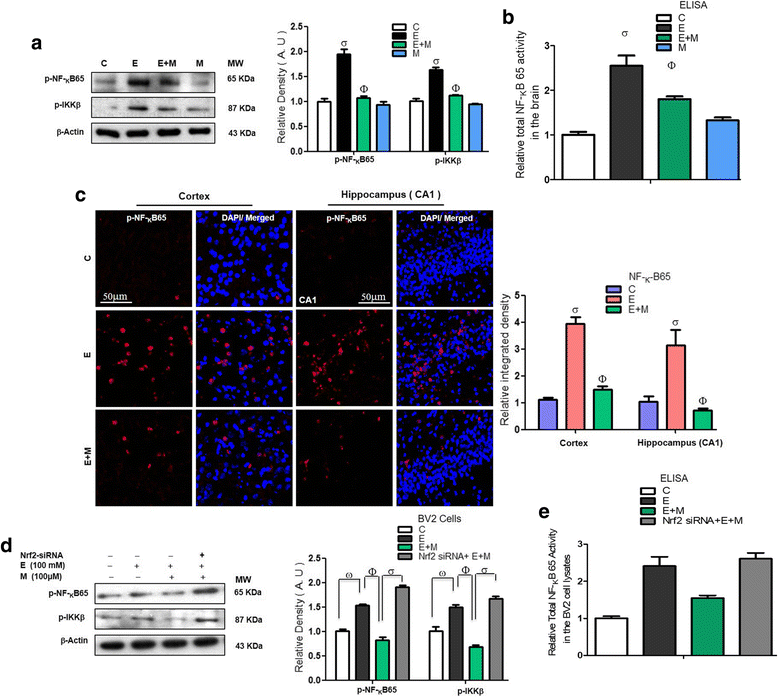
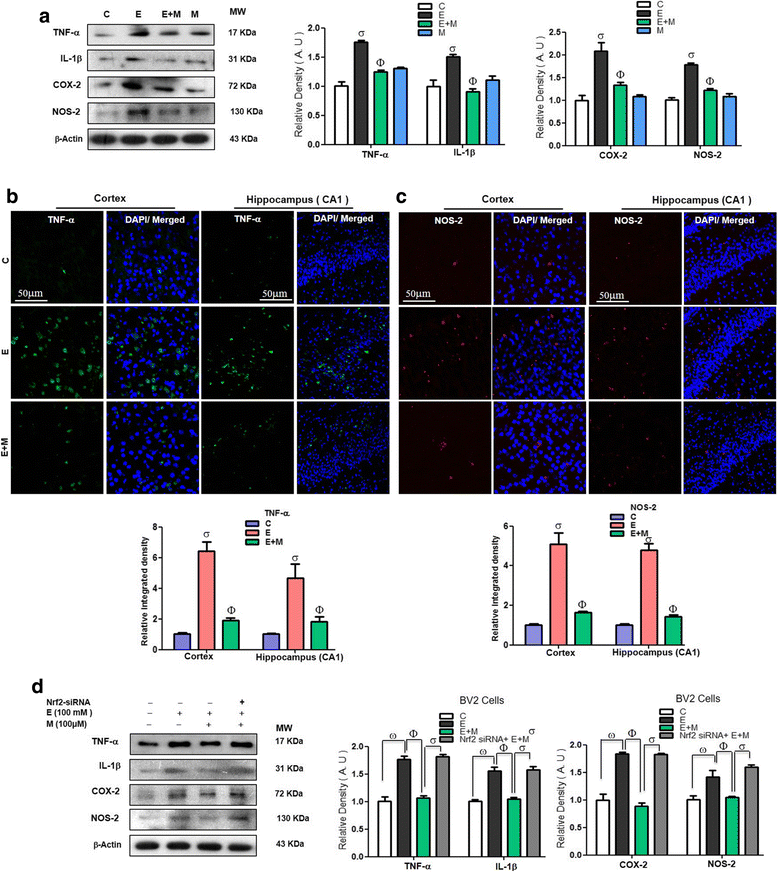
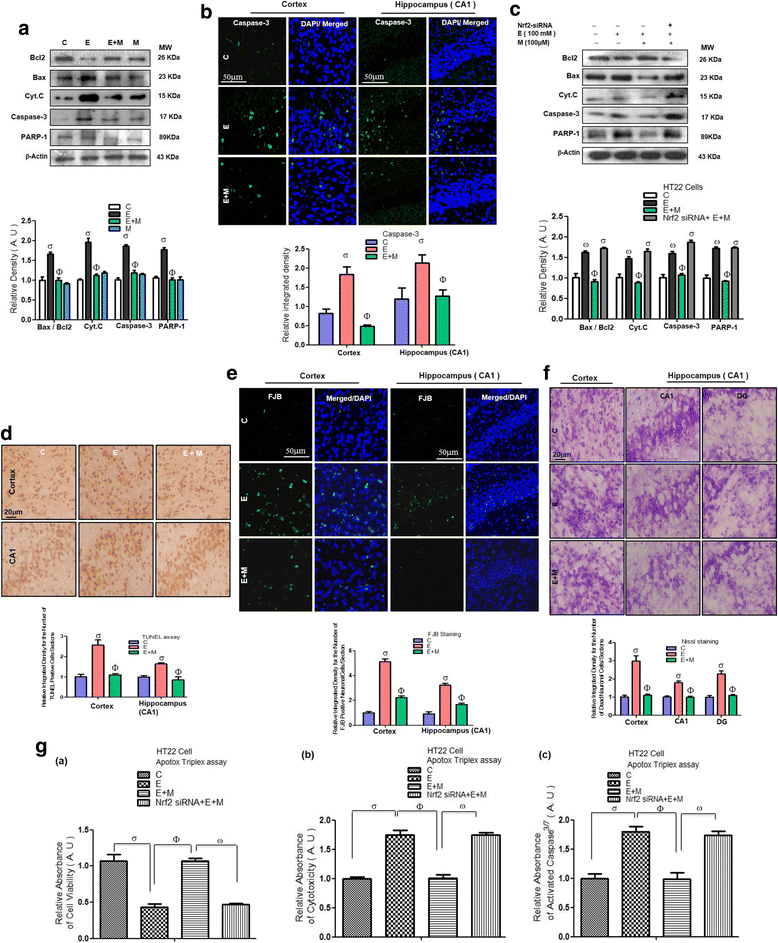
Similar articles
-
Melatonin Stimulates the SIRT1/Nrf2 Signaling Pathway Counteracting Lipopolysaccharide (LPS)-Induced Oxidative Stress to Rescue Postnatal Rat Brain.CNS Neurosci Ther. 2017 Jan;23(1):33-44. doi: 10.1111/cns.12588. Epub 2016 Jul 15. CNS Neurosci Ther. 2017. PMID: 27421686 Free PMC article.
-
Anthocyanins abrogate glutamate-induced AMPK activation, oxidative stress, neuroinflammation, and neurodegeneration in postnatal rat brain.J Neuroinflammation. 2016 Nov 8;13(1):286. doi: 10.1186/s12974-016-0752-y. J Neuroinflammation. 2016. PMID: 27821173 Free PMC article.
-
The possible neuroprotective effects of melatonin in aluminum chloride-induced neurotoxicity via antioxidant pathway and Nrf2 signaling apart from metal chelation.Environ Sci Pollut Res Int. 2019 Mar;26(9):9174-9183. doi: 10.1007/s11356-019-04430-9. Epub 2019 Feb 4. Environ Sci Pollut Res Int. 2019. PMID: 30719664
-
Nrf2 and antioxidant defense against CYP2E1 toxicity.Subcell Biochem. 2013;67:105-30. doi: 10.1007/978-94-007-5881-0_2. Subcell Biochem. 2013. PMID: 23400918 Review.
-
Functional Food Nutrients, Redox Resilience Signaling and Neurosteroids for Brain Health.Int J Mol Sci. 2024 Nov 12;25(22):12155. doi: 10.3390/ijms252212155. Int J Mol Sci. 2024. PMID: 39596221 Free PMC article. Review.
Cited by
-
Melatonin Induces Analgesic Effects through MT2 Receptor-Mediated Neuroimmune Modulation in the Mice Anterior Cingulate Cortex.Research (Wash D C). 2024 Oct 8;7:0493. doi: 10.34133/research.0493. eCollection 2024. Research (Wash D C). 2024. PMID: 39381792 Free PMC article.
-
Melatonin inhibits oxalate-induced endoplasmic reticulum stress and apoptosis in HK-2 cells by activating the AMPK pathway.Cell Cycle. 2020 Oct;19(20):2600-2610. doi: 10.1080/15384101.2020.1810401. Epub 2020 Aug 23. Cell Cycle. 2020. PMID: 32871086 Free PMC article.
-
Lupeol Treatment Attenuates Activation of Glial Cells and Oxidative-Stress-Mediated Neuropathology in Mouse Model of Traumatic Brain Injury.Int J Mol Sci. 2022 May 29;23(11):6086. doi: 10.3390/ijms23116086. Int J Mol Sci. 2022. PMID: 35682768 Free PMC article.
-
Effect of Acute Melatonin Injection on Metabolomic and Testicular Artery Hemodynamic Changes and Circulating Hormones in Shiba Goats under Sub-Tropical Environmental Conditions.Animals (Basel). 2023 May 29;13(11):1794. doi: 10.3390/ani13111794. Animals (Basel). 2023. PMID: 37889744 Free PMC article.
-
Hesperetin, a Citrus Flavonoid, Attenuates LPS-Induced Neuroinflammation, Apoptosis and Memory Impairments by Modulating TLR4/NF-κB Signaling.Nutrients. 2019 Mar 17;11(3):648. doi: 10.3390/nu11030648. Nutrients. 2019. PMID: 30884890 Free PMC article.
References
MeSH terms
Substances
LinkOut - more resources
Full Text Sources
Other Literature Sources
Medical
Research Materials

